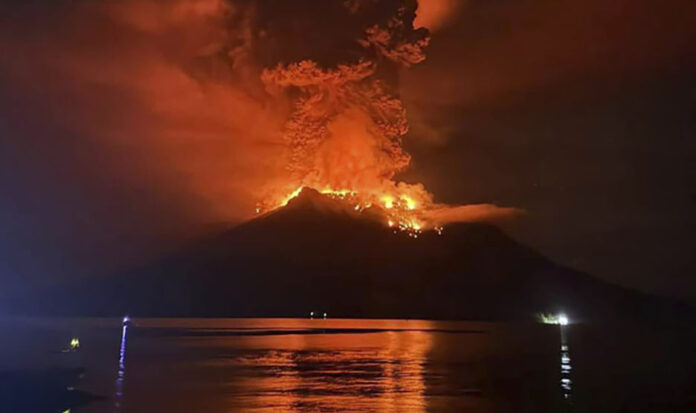Indonesia, renowned for its breathtaking landscapes and vibrant culture, is once again in the throes of nature’s fury. A volcanic eruption at Ruang Mountain in Sulawesi has sparked a series of alarming events, prompting authorities to issue a tsunami alert and evacuate thousands from the vicinity.
The eruption, characterized by massive plumes of ash soaring into the sky, has rattled the northern side of Sulawesi island with at least five major eruptions reported within a span of 24 hours. As a precautionary measure, Indonesia’s Center for Volcanology and Geological Disaster Mitigation swiftly escalated the volcano alert to its highest level, signifying the imminent danger posed by the unfolding events.
In the wake of this volatile situation, over 11,000 individuals residing in the vicinity have been instructed to vacate the area promptly. The urgency of the evacuation efforts underscores the severity of the threat looming over the region. Among the concerns voiced by officials is the potential for a catastrophic collapse of part of the volcano into the sea, a scenario reminiscent of the 1871 eruption which triggered a devastating tsunami.
Indonesia’s geographical location along the infamous “Ring of Fire” renders it particularly vulnerable to seismic activities, including volcanic eruptions. This geological phenomenon, characterized by a horseshoe-shaped belt of seismic fault lines encircling the Pacific Ocean, underscores the perpetual risk faced by inhabitants of the archipelago.
Tourists and locals alike have been advised to maintain a safe distance of at least 6 kilometers from the towering Ruang volcano, heeding the cautionary directives issued by authorities. The specter of past tragedies, such as the 2018 eruption of Anak Krakatau which culminated in a deadly tsunami claiming hundreds of lives, serves as a stark reminder of the catastrophic consequences that can ensue from volcanic unrest.
The imminent threat posed by the Ruang volcano extends beyond its immediate vicinity, with Tagulandang island lying perilously close to the epicenter of the volcanic activity. Residents of this island, along with those in the surrounding areas deemed at risk, have been mobilized for evacuation measures to ensure their safety.
The logistical challenges inherent in orchestrating such large-scale evacuations are not lost on Indonesian authorities. Plans are underway to relocate affected residents to Manado, the nearest city on Sulawesi island, albeit a journey fraught with logistical complexities, spanning six hours by boat.
As Indonesia braces itself against the fury of nature, the collective resilience and preparedness of its populace are once again put to the test. Amidst the chaos and uncertainty, one can only hope that swift and decisive action coupled with international support will mitigate the potential fallout of this unfolding crisis, sparing lives and alleviating the plight of those affected.


